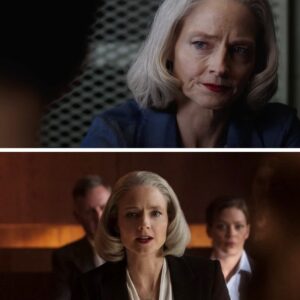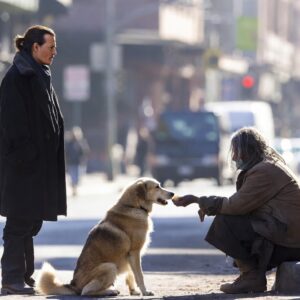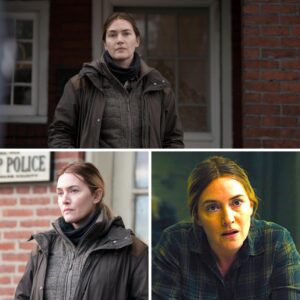In the dim corridors of cinematic memory, few villains cast a shadow as long and insidious as Dr. Hannibal Lecter. It’s been over three decades since Jonathan Demme’s The Silence of the Lambs slithered into theaters on February 14, 1991, armed with a psychological scalpel that sliced through the veneer of safety and exposed the primal fears lurking in our collective subconscious. Adapted from Thomas Harris’s 1988 bestseller, the film wasn’t just a thriller—it was a descent into the abyss, a tale of pursuit where the hunter becomes the hunted, and the monster wears a mask of refined intellect. At its heart pulsed the electrifying dynamic between Jodie Foster’s resolute FBI trainee Clarice Starling and Anthony Hopkins’ cannibalistic savant, Hannibal Lecter. But here’s the chilling truth: Hopkins, the Welsh thespian who conjured pure dread from a straitjacket and a sibilant whisper, commanded the screen for a mere 24 minutes and 52 seconds. In that fleeting window, he didn’t just steal the show—he devoured it whole, earning a Best Actor Oscar and etching Lecter into the pantheon of eternal nightmares. Yet, for Foster, those moments weren’t mere artistry; they were visceral, leaving scars that echoed long after the final cut. As we revisit this masterpiece in 2025—amid reboots and remakes that pale in comparison—The Silence of the Lambs endures not as relic, but as a haunting reminder of cinema’s power to traumatize and transfix.
The genesis of this unholy alliance traces back to a novel that Hollywood initially dismissed as unfilmable. Harris’s book, the second in his Lecter saga following the 1981’s Red Dragon (adapted poorly as Manhunter in 1986 with Brian Cox’s subdued Lecter), plunged readers into a labyrinth of serial slaughter. Buffalo Bill, the skin-flaying madman played with grotesque menace by Ted Levine, terrorized young women, his crimes a grotesque tapestry of gender dysphoria and delusion. Enter Clarice Starling: a steel-willed orphan scraping through the FBI Academy on grit and ghosts, her childhood marred by the “scream of the lambs” on her uncle’s farm—a metaphor for the voiceless victims she vows to silence. To crack the case, Clarice must barter with the devil himself: Hannibal “The Cannibal” Lecter, a brilliant psychiatrist imprisoned for his baroque murders, his cell a fortress of Plexiglas and paranoia in Baltimore’s bowels.
Casting Clarice was a battleground. Jodie Foster, then 28 and fresh off her raw, Oscar-winning turn as a rape survivor in 1988’s The Accused, lobbied fiercely for the role. MGM, wary of the material’s darkness, auditioned Michelle Pfeiffer and Meg Ryan, but Foster’s audition tape—delivered in a Southern drawl she’d honed for authenticity—sealed it. “I saw her vulnerability, her quiet rage,” Demme later reflected in a 1991 Entertainment Weekly profile. Foster dove deep, shadowing FBI agents in Quantico and enduring the male gaze of her colleagues, mirroring Clarice’s uphill climb in a testosterone-soaked bureau. She shed pounds for the role, her frame a deliberate echo of the victims’ fragility, and wrestled with the character’s psyche: a woman armored in ambition yet haunted by paternal voids and the lambs’ eternal bleat.
Hopkins’ Lecter, however, was lightning in a bottle. Demme first courted Gene Hackman, who bizarrely wanted to play both Lecter and Jack Crawford (Scott Glenn’s gruff profiler), before passing. Sean Connery recoiled at the “repugnant” script, quipping it sounded like a children’s tale. Enter Hopkins, 53, riding high from The Elephant Man but craving a villain to eclipse his dramatic pedigree. “I thought, ‘Cannibal? What’s this?'” he chuckled in his 2024 memoir In the Ruins. But the script gripped him like Lecter’s vise: Harris’s Lecter was no slasher-clown but a Renaissance monster—suave, surgical, a gourmet of the grotesque who savored psyches as much as flesh. Hopkins drew from real predators: he studied serial killer files, observed zoo reptiles for their unblinking menace, and fused Katharine Hepburn’s patrician clip with Truman Capote’s lisping menace. The voice emerged in rehearsals—a metallic hiss, clipped and condescending, that turned “Clarice” into a caress laced with venom. His physicality? A coiled serpent: head tilted like a bird of prey, lips smacking in that improvised census-taker slur (“I ate his liver with some fava beans and a nice Chianti”)—a line so visceral it birthed memes and merchandise decades hence.
Production in Pittsburgh’s cavernous steel mills and rain-slicked streets was a pressure cooker. Demme, hot off Married to the Mob, shot on a shoestring $19 million budget, transforming abandoned warehouses into the FBI’s behavioral science unit and a mock-up prison that reeked of institutional despair. The iconic cell scenes, separated by thick Plexiglas smeared with drawings (Lecter’s “art therapy” scrawls of Renaissance nudes), were filmed in isolation: Demme’s Hitchcockian flourish had actors deliver lines straight to the lens, not each other, forging an intimate, voyeuristic dread. Foster shot her side first, her breaths fogging the glass; Hopkins later synced his responses, his eyes locking the camera’s gaze, pulling viewers into Lecter’s dissecting stare. “It was like being flayed alive,” Foster admitted in a 2016 Graham Norton Show appearance. Their first encounter? A table read in London where Hopkins unleashed Lecter unannounced. “I went full throttle,” he recalled. “The room went dead silent. Jodie’s face… she tensed like a deer in headlights.” Foster, munching a tuna sandwich, froze—then avoided him entirely for months.
That avoidance wasn’t affectation; it was alchemy. Foster confessed on Norton that Hopkins terrified her: “The movie didn’t scare me, but Anthony did.” His stillness unnerved her—the rare blinks, the sudden sibilants, the way he’d improvise barbs like mocking her accent (“Ni-ice…”) mid-scene, drawing real flinches from her. In one take, his ad-libbed “quid pro quo” taunt about her father’s death left her trembling, tears genuine. Hopkins, no stranger to intensity (he’d battled alcoholism and blackouts), felt the chill too: “Jodie was a force—sharp, unyielding. I was scared she’d see through me.” Their mutual dread fueled the film’s core: Lecter’s seduction of Clarice, a twisted mentorship where he peels her layers like an onion, exposing insecurities for sport. “He saw her as a lamb himself,” Hopkins mused in a 2021 Variety reunion, “innocent yet ravenous for justice.” Demme amplified it with close-ups that invaded personal space, extreme angles that dwarfed Clarice in male shadows, and Howard Shore’s score—a brooding cello pulse underscoring the intellectual tango turned tango of terror.
The film’s February ’91 release was a Valentine’s Day gut-punch, grossing $272 million worldwide on word-of-mouth whispers. Critics swooned: Roger Ebert called it “one of the most intelligent thrillers ever made,” praising Hopkins’ “hypnotic” menace. Audiences fled theaters mid-Goodbye Horses dance, yet lines snaked around blocks. Oscar night 1992 was Lecter’s feast: Lambs swept five majors—Picture, Director, Actor, Actress, Adapted Screenplay—only the third film ever, after It Happened One Night and One Flew Over the Cuckoo’s Nest. Hopkins, beating De Niro and Freeman, quipped in his speech: “Bone apple tea!”—a mangled nod to Lecter’s repast. Foster, her second win, dedicated it to “the lambs who still scream.” But glory masked cracks: controversy brewed over Buffalo Bill’s queer-coded villainy, sparking GLAAD protests for stereotyping trans identities (Demme donated proceeds to advocacy). Foster defended Clarice as feminist icon: “She’s no victim; she’s the blade.”
Behind the triumph lurked trauma. For Foster, Lecter’s gaze lingered. In a 2019 SXSW masterclass, she revealed nightmares of Hopkins’ unblinking eyes, the improv attacks blurring art and assault. “It was method by accident,” she said. “That fear? It made Clarice real.” Hopkins, introspecting in therapy post-film, confronted his “inner devil”—the darkness he’d channeled, born of a Welsh childhood scarred by bullying and his mother’s institutionalization. “Playing him freed something feral,” he wrote in his memoir. “But it haunted me—those slurp sounds echoing in dreams.” Their post-wrap thaw? A tearful hug on the final day, sandwiches abandoned, fears confessed. “We’d spooked each other proper,” Hopkins laughed in 2021.
Decades on, Lecter’s specter haunts anew. In 2025, as AI deepfakes resurrect old horrors and true-crime pods dissect real Lecters like Bundy or Dahmer, Lambs feels prophetic—a mirror to our fascination with monsters who quote Dante while dining on the damned. Hopkins, 88 and knighted, reprised Lecter in Hannibal (2001)—a campy sequel Foster skipped, citing “artistic whoring”—and Red Dragon (2002), but none eclipsed the original’s purity. Foster, 62, directs Nyad and stars in True Detective: Night Country, her Clarice steel undimmed. Reunions spark: at the 2021 Oscars, they bantered over Chianti; in 2024, Hopkins praised her “quiet fury” on The Father press. Fan culture thrives—cosplay at Comic-Cons, TikToks syncing “fava beans” to ASMR, podcasts probing Lecter’s “therapy” ethics.
Yet, the film’s true genius lies in its economy: Hopkins’ 25 minutes (debated as 16 in close-ups) permeate the 118-minute runtime like blood in water. Every Starling stride echoes his quid pro quo; Buffalo Bill’s moths flutter with Lecter’s whisper. It’s a testament to presence over presence—villainy as virus, infecting minds long after the credits. For Foster, the trauma birthed triumph: Clarice empowered women in STEM, FBI enrollment spiking post-film. “She silenced my lambs,” Foster said in 2021. For us? Lecter lurks in binge-watches, reminding that evil isn’t chainsaws and screams—it’s the intellect that savors your fear. As Hopkins’ hiss lingers—”Tell me, Clarice… have the lambs stopped screaming?”—we shiver, knowing they haven’t. And perhaps never will.




